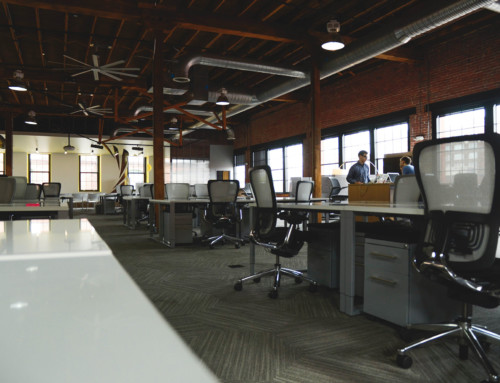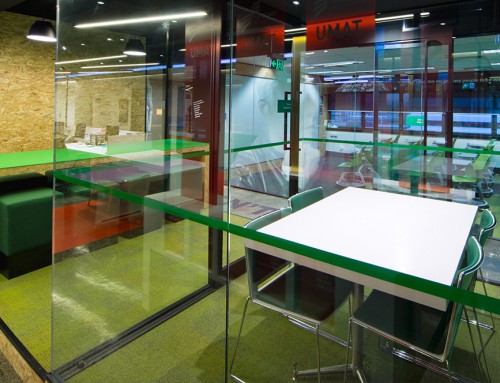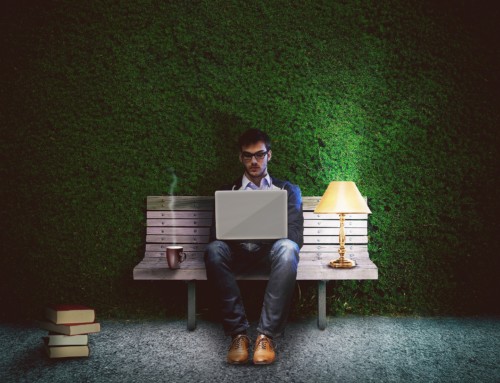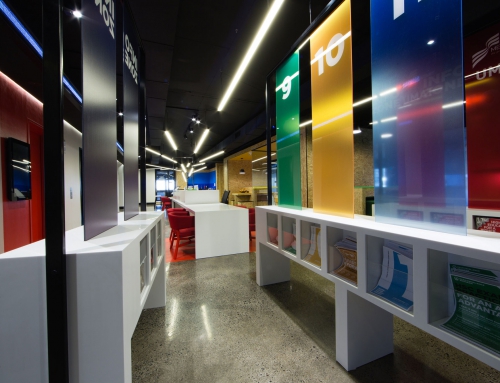With the rise of the awareness in environmentally sustainability and workplace health and wellness comes a wave of employees who seek energy-efficient and eco-friendly workplaces that support their needs.
Smart companies have already recognised this: workplaces are much more than a cubicle with resources. Carefully designed workspaces can contribute significantly to a progressive business strategy. Research has shown that office environments influence productivity, engagement, mental health, and efficiency. An office space designed to reflect your brand and culture also shapes perceptions among shareholders, investors, and employees, positively impacting your internal culture and public image.
These factors can directly affect your company’s bottom line.
As technology transforms the world, work is becoming increasingly flexible. The internet fosters evolving attitudes toward office work, with more employees drawn to freelance opportunities. Many companies now face challenges in employee retention as new talent explores flexible work options.
Creating a flexible, comfortable workspace that supports sustainability and energy-saving strategies is one powerful way to retain employees and strengthen loyalty to your company.
Sustaining business strategy and employee needs: A brief guide
Saying all of this is well and good – but how would you start balancing your business and employee needs?
That’s where business strategy comes in. What type of work culture and behaviours do you want to promote? Does your office environment drive engagement, fulfilment, and productivity, or do your fitout and design choices contribute to stress and distraction? Perhaps your current office feels too industrial or bland, and you’d like to bring in more personality. This links directly to your brand identity—what impression do you want clients to have when they visit your office?
If retaining talent is a priority, consider how to incorporate mobility and flexibility into your workspace design while keeping it as multi-purpose as possible.
Retain Talent with end of trip and food preparation areas that delight
To retain talent – businesses are increasingly creating work environment that encourage better, healthier and more affordable working environments. Two ways is
- End of Trip Facilities
- Food Preparation Areas
End-of-trip facilities are increasingly popular in urban offices, providing employees who ride, walk, or run to work with convenient spaces to change and prepare for their day. The City of Sydney knows that the way we move around our city is changing. Businesses are looking for ways to increase productivity, keep staff active and get them from A to B efficiently. Food preparation areas keep staff on-site, away from the hustle and bustle, and create a social hub within your organisation. They can also help save on takeaway lunches and encourage healthier eating habits.
Strategic Goals and Business Strategy
Identify your business goals and business strategy – and match them up with how you can empower them with your workspace.
Another effective approach is to ask employees what they need in their daily work that the office may currently lack. Empowering employees by involving them in workplace decisions helps them feel valued and engaged. Perhaps the office feels too cramped, or the lighting is overly bright? Create plans that cater to both your business needs and their input, resulting in a more synergistic workplace.
Considering office sustainability from the outset is a great design choice. Implementing energy-saving solutions, water features, plants, reclaimed building materials, recycling and tracking energy-use as early as possible will help shape your organisation’s directives and goals from the outset. Using these early can also help your organisation meet their energy and sustainability goals.
Project Managers
We design – Construct -Deliver
Don’t hesitate to engage in a team of professionals like SB Projects that can help you clearly assess these needs. All of these questions can be daunting, but workplace professionals and specialists are equipped with the latest research and industry expertise to help you gain the office of your dreams at a budgeted price. Let us help bring the business plans and goals that you’ve drawn into reality, and leave them to balance workplaces budget, design, planning and change management.
And in the end, accept that the average office refurbishing cycle is approximately every 4 years or so. Technological needs, new research, your business outgrowing your office, competing for the best conditions to retain top talent, and the changing market will always restart this cycle over and over again. This is an inevitable process, as time rolls by and your office builds wear and tear.
Be adaptable and keep an open mind, and accept change as it comes. Progress is important, and when the time rolls by it might be another chance to dive into a new opportunity to revamp your image and culture to the times. So be bold, and take the best advantage of them as you can!






